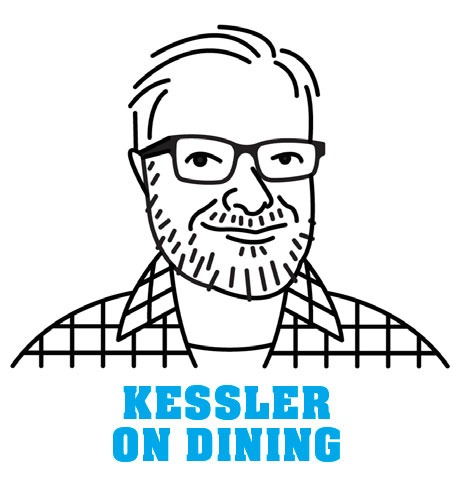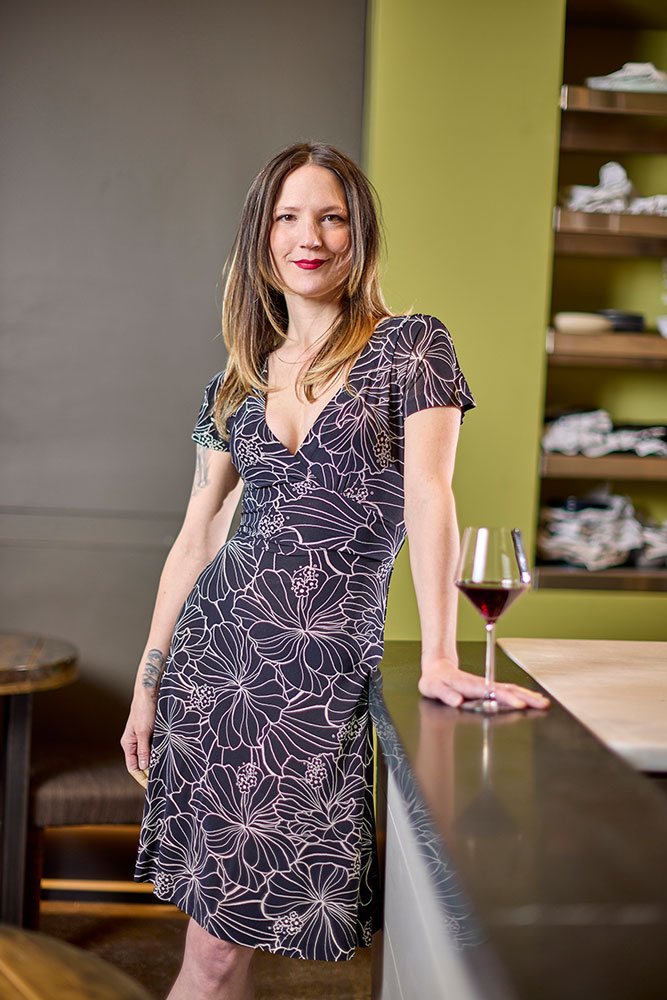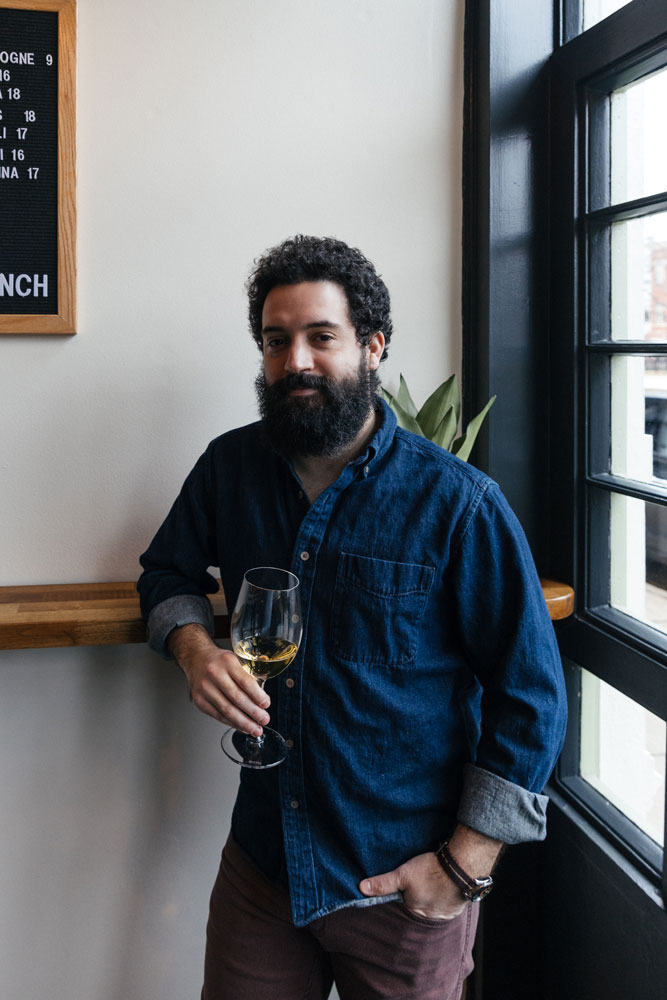
When wine and food pair well, they form a kind of covalent bond. The flavors of both open up and become more dimensional than they had been before. The wine lengthens and lingers in your mouth, the seasonings on the plate jump while its centerpiece ingredients reveal their intrinsic flavors in a way they hadn’t before.
As much as I love the interplay of wine and food, I don’t often love “wine pairings,” particularly those offered in ultra-premium tasting menu restaurants. In my experience these pairings — which usually comprise a good six to eight half pours — don’t always enhance the food and, as often as not, get in the way of appreciating it. There can be too many big flavors competing for your attention and too many combinations that just plain don’t work on a physiological level. Sure, pairing is about the suggestion of berries and chocolate in a glass jibing with ingredients in a sauce, but more than that it’s about finding that aha moment when the precise levels of salt and acid in the food unlock something in the wine. This requires more collaboration, more sitting down to taste and tweak, than most chefs are willing to do.
Yet sommeliers want you to order the pairings because it’s their craft. This is how they get to open cool bottles or prove that unlikely bedfellows can indeed get it on.
I was thinking about this last week when I had the great pleasure of dining at Oriole for the first time in years. This West Loop restaurant owned by chef Noah Sandoval holds two Michelin stars and serves only a choice of tasting menus — the least elaborate being a progression of 13 small bites that take a good two to three hours to consume.
Oriole greets guests at the bar with a complex non-alcoholic cocktail, and as you sip on it beverage director Emily Rosenfeld wanders over to talk libations. She of course proposes the wine pairings. When I say I’d rather order by the glass, she tries to assure me the quantity of wine wouldn’t be excessive, just a bit more than three glasses. I stick to my guns. I didn’t know much about Sandoval’s cooking other than to expect a lot of seafood, and what I mostly want is Champagne.

After that meal I thought about how thoroughly pairings have taken over wine service. I mean, we secure and prepay hard-to-get reservations on Tock or Resy and are immediately taken to screens that encourages us to choose from a selection of pairings that go from entry-level reds and whites to wildly expensive reserve selections comprised of, I don’t know, grand cru Burgundy, unicorn tears, and elixir.
Yet I wondered: do somms themselves actually order pairings when they go out for fancy dinners? I interviewed a few who have impressed me with their expertise, insight, palate, and service, and they were three for three: Nope.
Jelena Prodan (S.K.Y., Apolonia, Valhalla) thinks the pairings are too often about ego. “Sommeliers have to wake up and stop being such douchebags,” she says, “They let their personal opinions interfere with what the wine pairings are supposed to be. They’re thinking about ‘How am I going to showcase my cellar,’ but sometimes using a $15 bottle will be so much better than an $80 bottle.”
When she dines out, Prodan likes to start with a cocktail, then have a glass of white and a glass of red. Perhaps that’s why she always does such a great job whenever I’ve asked her to pour me a coupla/three glasses to get me through the meal. After a few dinners in her restaurants, she knows that I’m an easy sell on the lightly oxidized wines or umami-rich sakes she proposes with chef Stephen Gillanders’ cooking, and that I like to linger over a structured red at the end of the meal.
Yet as she and the Valhalla team prepare to reopen in West Town this year (after closing in Time Out Market), she will have not one, not two, but five pairing options, including an all-Champagne tasting (okay, maybe I’ll relent) and a spirits tasting (not for me). “The main thing is I’m not trying to force my flavor profile on you,” she says. “The next time you come in, I want to have gained your trust.”
Ali Martin, the somm at Lincoln Square’s tasting menu restaurant Atelier (and at Elizabeth in the same location before) says she used to like to order pairings but now does so mostly to see what others are doing. “Not to dig at anyone, but I usually find them so boring,” she says. “Me, as a diner, I’d rather just get a bottle. It’s also more cost effective.”

Yet as a somm who’s spent much of her career in intimate restaurants with creative tasting menus, she’s had to develop a personal approach to pairings, and she does so with as much wit and humility as anyone in town. She understands that the only way to see if wine and food actually pair is to taste them together, but that doesn’t happen as much as it should. “I’ve never worked with a chef who’s been good about that,” she laughs. “They always have the best intentions and say they’ll let me taste things. But, alas.”
So Martin keeps the lines of communication open, follows the progress of a dish in the kitchen as ingredients change, and keeps an arsenal of versatile wines on hand. She understands her role is to accessorize, boldly. Funky Spanish vermut and soda with Atelier’s signature “larder” course of bite-sized canapés; a chillable Hungarian red Zweigelt with Sichuan-spiced seafood. Her spiels as she pours are breezy; she searches widely for food-friendly wines with cool backstories.
Jonas Bittencourt, the GM and wine director at John’s Food & Wine in Lincoln Park, never accepts a pairing outright but instead asks what bottles he can expect to see during the meal. “Still,” he says, “9.8 times out of 10 I’ll order bottles or glasses on my own. It can feel outdated, like everything is set, but pairings are so relative. There’s never a perfect pairing; there are always multiple options.”
Bittencourt, who trained under master sommelier Pascaline Lepeltier and previously ran the wine program at Asador Bastian, is rarely asked to devise pairings for John’s à la carte menu. It happens, though, when a party books the private dining room for a coursed meal, and in that case he keeps it cheap — $60 a head as opposed to the $150 a head that seems to be the going rate in Chicago. “Some somms want to justify opening a 1998 Bordeaux but how do they justify what they charge?,” he asks. “What’s missing from pairings is the fun side of things.” Amen, brother.
My meal at Oriole went just fine with three glasses of wine and a little taste of something sweet with the foie gras course. There was a lovely grower Champagne that seemed to like every dish put before it, a white Burgundy that was perhaps a bit too oaky to play nicely with acidic sauce, and a red Bordeaux with some bottle age that was luscious with roast squab. Now that I know the food and Rosenfeld’s tastes better, I may even go for a pairing next time.
Great White Whale Spotted in the ’Burbs
For the next two months the residents of this great metropolitan statistical area will be able to order Pequod’s Pizza and have it delivered wherever they live in the greater Chicago area — from Orland Park to Naperville to Schaumberg. The only catch: each suburb gets one day to indulge and then the delivery drivers move on to the next bedrock community. The schedule and order form can be found here. Pequod’s pizza, with its signature caramelized crust, routinely tops lists of the best pizza in the city and in the country, like Yelp’s recent country-wide ranking. If you’re curious about our favorites (not Pequod’s, sorry!) then step right here.


